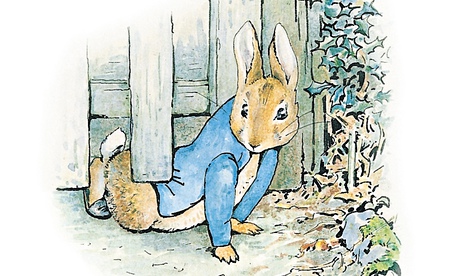
I'd like my children to read books written by authors from across the world which show what children from other countries enjoy. Are there any geographical or linguistic barriers which children's books can't cross?
Last week Sally's Green's supernatural thriller Half Bad, which has only just been published, smashed all records by becoming "The most translated book by a debut author, pre-publication."
Knocking aside the records held by Twilight and The Hunger Games, such has been the excitement about this book that even before it is in the bookshops is has sold into 46 languages.
The result is that it will be eagerly read by young readers the world over showing that for some books at any rate there are no barriers to its global success. Half Bad has spread far faster than most titles but children's books have long been international commodities.
Beatrix Potter's The Tale of Peter Rabbit and her many other titles were early examples of how "international" even the most quintessentially English books can be.
For English language readers, books from across the globe written in other languages include titles such as Tintin in the Land of the Soviets which launched Herge's now famous series when it was published in Belgium in 1929 before going on to sell more than 250 millions copies in fifty languages world wide.
René Goscinny and AlbertUderzo's Astérix the Gaul (translated into English by Anthea Bell) equally successful cartoon text and pictures, first published in France in 1961, was swift to follow.
But fiction, too, has long been crossing linguistic and geographical barriers with examples such as Tove Jansson's Comet in Moominland , her first title in the much-loved Moomins series published in Finland in 1946 before spreading across the world and Tonke Dragt's The Letter for the King, originally published in Dutch in 1930 and recently translated freshly for English readers.
For present-day children's experiences in other countries nothing could give a better picture than In the sea there are crocodiles by Fabio Geda. Originally published in Italian, is a harrowing but ultimately hopeful true story of an Afghani boy's experience of survival. Stories have always travelled across the world. While some are deemed too culturally specific – picture books, for example, have long played safe by keeping down the number of scarlet pillar boxes and red buses which used so to distinguish London an enormous number of books for children of all ages spread across the globe.
This week the 41st Bologna Children's Book Fair opens for business with over 1000 exhibitors from 75 countries gathering to buy and sell the copyrights to children's books. Built on the simple premise of a shared enjoyment of "Once upon a time…" it provides an optimistic way of uniting children culturally across the world.
Do contribute to our discussion on the best books in translation and watch our for all our blogs and features on translated fiction this week, including a live blog on the Astrid Lindgren prize tomorrow. If you have a question to ask the Book Doctor then email childrens.books@theguardian.com

